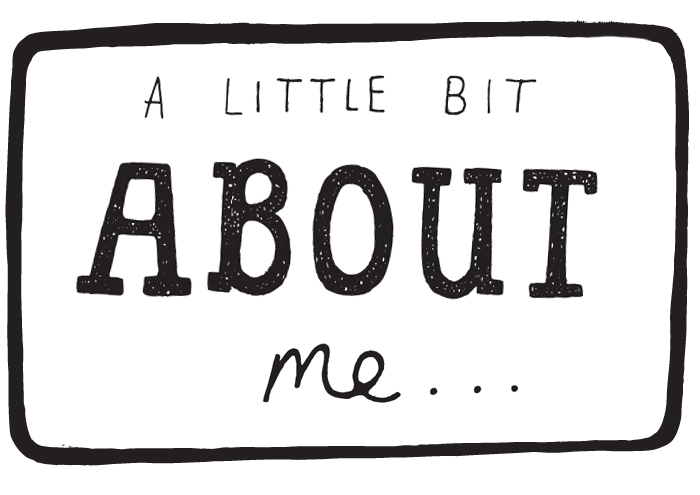Your Portfolio Site, Part Three: The Awards Section.

When I started writing this entirely subjective ‘How To Put Your Portfolio Site Together’ series it began with me just wanting to tackle the ‘awards’ section. But when I started writing about that I found that it spread into the ‘work’ and ‘about’ sections, and the post was getting too long, so I split it into three posts, and, having served up the starter and main course, I now offer the dessert.
When I worked with Daryl we always had a good laugh at how people portrayed their awards in the Campaign A-List booklet (do they still do that? Campaign is such a venal rag, I have no idea if they even exist anymore. Also, they printed chunks of my blog for years without any kind of recompense or permission, so they can all go and frotter themselves in the ear).
If an A-lister hadn’t actually won a proper prize in an award scheme but maybe got a longlist or a nomination, they might say ‘recognised by…’. If they were a bit weird, they might list a very high number with precision, like ’78 Gold, Silver or Bronze awards’. If they scored dozens with the piss-easy London International Awards, but fewer from Cannes and D&AD, they might say ‘Golds and Silvers from Cannes, D&AD and London International’.
Other people find unusual ways to say impressive things. I recall one ECD saying he was the only creative with ‘at least a nomination in press, posters, TV and radio at D&AD’. Even if that’s a bit pretzel-y, and three of them are nominations rather than Pencils, it’s still a rare boast.
So what he did, and what you should do, is make your awards section sounds as substantial as possible. Here’s how to do that, from the bottom up:
If you have no awards, don’t have an ‘awards’ section because it will be empty. Just ignore the whole thing, or add something to your ‘about’ section that says, ‘I also find awards to be vulgar and distasteful’. If you’re just starting out, people don’t really expect you to have won stuff. It’s fine.
Next stage up is a smattering of awards in schemes no one has heard of, and maybe the odd shortlist in something bigger. That’s still pretty cool, unless you’re older (‘I’ve only had one listing in Luerzer’s Archive’ – Junior Creative, aged 54).
If you’re older and unawarded, also avoid having an awards section, or have one and accept that people will be more likely to hire you for brand experience and/or known-yet-unawarded campaigns, like Autoglass Repair, Autoglass Replace.
Next is several awards in known schemes, such as Cannes, D&AD, One Show and Clios (Tier One); regional things like Andys, Spikes, New York Festivals, AWARD and Campaign BIG (Tier 2, but maybe Tier One if you’re trying to get hired in that country), also category-specific things like Webby’s and respectable magazines like Creative Review and Design Week); Then the other stuff like Food and Beverage Awards, or PR Week and shit I’ve never heard of.
If you have a bunch of these you can lump them all together under an equivocal word like ‘recognised’, or do the whole ‘number’ thing, but what you DO NOT DO is start listing them one by one over the years. It just looks underwhelming and a bit thirsty.
Next stage is a list worth listing. It doesn’t have to be a Grand Prix every year, but don’t have a five year gap between prizes, or Cannes Golds all in one year, followed by Food and Beverage awards for the following six years. It makes you look like a one hit wonder.
After that, it’s up to you. I love what my old partner Cam Blackley has done, listing every single award he’s ever won, with the Cannes Titanium and D&AD Gold alongside winners of the APAC Tambuli Awards and Sirens (whatever they are).
My personal choice was to add the sentence ‘I’ve won dozens of awards and pitches’ to my ‘about’ section. I could list them all, but then I’d run into problems over which work I made and which I CD-ed. If you want to look me up in D&AD’s archive, I hope you won’t be disappointed. In addition, the good CD work is in the ‘work’ section with an attendant explanation.
As a little side point, I think that writing a novel that was published by Penguin and being the advertising columnist for Creative Review are more impressive than a Cannes Gold, but that’s just me. I usually get hired for some kind of writing, so I like people to be sure I can do that to a high standard.
It’s also worth saying that nobody, and I mean NOBODY checks the claims. Where are the non-D&AD stats listed? And even if you found them, why would anyone comb through every year to check the veracity of an awards claim?
The real lesson? Just ignore all of the above and say whatever the hell you like.
This is advertising. Just do what you do for your clients, for yourself.

